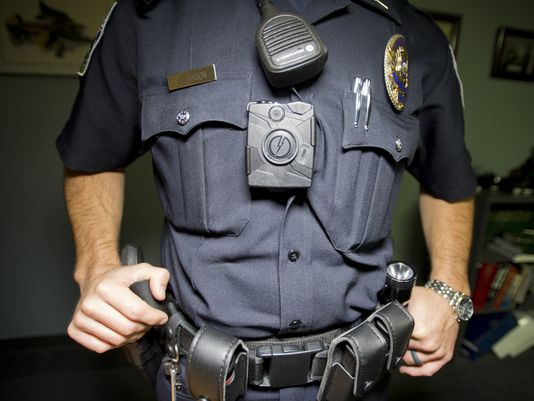
The Taser has become an American icon over the years, particularly with the number of cases of police wantonly using them against non-threatening civilians. Profits are surging for the sometimes-lethal-non-lethal device’s maker, but not because of its namesake device. Instead, police body camera sales are driving the company’s profits up: it has reported a 97.5% jump in sales for its Axon segment (which produces the body cameras,) which is up 8.9 million big ones when compared with the same quarter last year.
This seems to be a good thing, considering the fact that police brutality and executions have become such a big deal. In theory, having another set of “eyes” (albeit a set that can be covered and left behind conveniently when one intends to actually brutalize a teenager) watching our men in blue, should keep them on the straight and narrow. New Jersey is set to be one of the first states to equip all its troopers with body cameras, according to the state Attorney General, John Hoffman.
Baltimore has decided to install cameras in police vans as well in order to gain a “more complete record of what occurs there.”
“As of the end of the second quarter, 26 major cities have purchased Taser’s Axon body-worn cameras and/or its digital evidence management solution including,” Taser International announced on its website, listing all the cities.
According to the company, over “152,000 lives and countless dollars have been saved with Taser’s products and services.” How on earth they calculated that number is beyond me. Perhaps they simply assumed that every time a teen got Tasered, that same teen may have been shot to death had the officer not had a Taser.
In a report from the Bureau of Justice Statistics (BJS), the increase in body cam use was noted. It found that police officers are increasingly employing video cameras, conducting surveillance and wearing protective body armor while on patrol.
In another report, this one by the Justice Department, police officers in the U.S. have stepped up their use of defensive tactics and equipment. In addition, the number of departments authorizing the use of stun guns and Tasers has “increased dramatically in the last decade.”
The researchers of the Justice Department report have found that 9/10 of all police departments allow the use of pepper spray and batons, 9/10 allow open hand physical force takedowns and closed-hand takedowns, while 4/10 allow for neck-restraint tactics.
All of this comes on the heels of the Michael Brown tragedy that occurred last summer in Fergusson, with The Guardian claiming in a study that 663 people were killed by police last year. This guesstimate is necessary because the FBI does not require law enforcement agencies to report how many executions, I mean “justifiable homicides,” were made by officers of the law. According to an FBI report, police officers “justifiably killed 461 felons, and private citizens justifiably killed 281 people during the commission of crimes,” in 2013. Really though, the answer is likely considerably higher than that considering the fact that nobody likes reporting the people they had murdered voluntarily. It’s just bad practice for serial killers.
Taser is the big winner out of all of this, considering the fact that Barack Obama has pledged 75 million USD for law enforcement to buy body cameras.
According to Taser, most of the people who bought the cameras also bought their cloud-based subscription-based digital evidence-management system.
“The Company is encouraged that agencies are selecting the Axon platform as the long-term solution for their digital evidence management needs,” Taser stated.
This Article (Taser Profits Surge As Police Stock Up On Body Cameras) is free and open source. You have permission to republish this article under a Creative Commons license with attribution to the author and AnonHQ.com.




